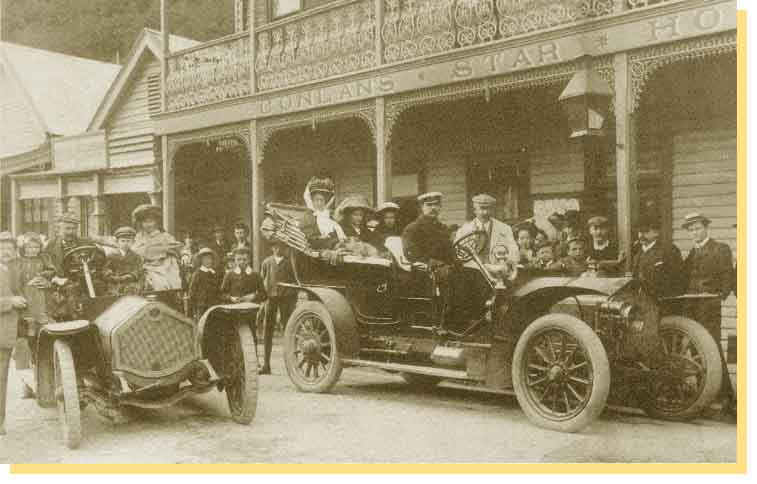

President Jim Hood welcomed us, and Marjorie Wood gave us an overview of the way they have organized their collection of memorabilia for an area far more extensive and ambitious than the area we try to cover, reaching as it does all the way down to Gormandale and the Strzeleckis to the south, and as far as Cowwarr and Toongabbie to the north-east. Their accomplishments are a credit to their dedication and hard work, although in our defence it should be said that they perhaps also reflect the fact that most of their committee members are retired, whereas most of ours are not. We have almost double their membership, which shows again the relative breadth and depth of Victorian family associations with Walhalla, and its significance in Victoria's and Gippsland's early history, at the same time highlighting the struggle of less visible community groups who are every bit as passionate as we are about preserving their historical identity. |
Back |
I couldn't help admiring some of the material they had on display, and I picked up a little $2 pamphlet called "The Peck Plaques", nominally about Sister Muriel Peck and her role as a pioneer Gippsland nurse, particularly in the infant welfare movement, but also telling much of the story of the early practice of medicine throughout the eastern half of the state. And in reading it at home later, I stumbled across a new insight into the hardships of life in early Walhalla.
Who arrived first?Readers of "Walhalla Heyday" or "The Switzerland of Australia" may possibly already be familiar with the photograph below of some of the earliest cars into Walhalla. A little further investigation reveals a puzzle, however. |

|
Page 41 of "Switzerland" shows this photograph with a caption that says, "A party of motorists who drove over rough bullock tracks from the Gippsland town of Sale in a remarkable five hours pose outside the Star Hotel (c. 1908)." It is worth noting that it's possible to do the same trip today of just under 100 kilometers in a little over an hour, but our cars are no more like theirs than are our roads like their "rough bullock tracks" in mid-winter. In its day, this must have been a breakneck sprint.
On page 103 of "Heyday", the caption accompanying the same photograph says, "Dr Hagenauer's party outside the Star Hotel, June, 1908, after driving the fifty miles from Sale in a little over five hours." There are two cars in the photograph, a large tourer and a smaller town car, and the women in their bonnets lend a festive picnic air to the scene that we can perhaps readily identify with today, of an affluent touring group out for a bit of a Sunday drive. The true story may well have become obscured by time and distance, but this visit was apparently purely business, which perhaps explains why "Mountain Gold", by John Adams (1978) claims that the first car only arrived in the town "in December 1908 ..., driven by C L Timms with three passengers" (p 110). So who was Doctor Hagenauer, and why did he undertake such a breathtaking race into Walhalla six months before the "first" car arrived? The answer reveals a great deal about the early practice of rural medicine, and the importance of its practitioners to these remote communities. "G.A."Dr Gustave Alfred Hagenauer MBBS, FRACS (or simply "G.A.", as he was more commonly known) was a native of Gippsland who commenced practice in Sale in 1898. He was eminent among what was even then a quite small fraternity of devoted medical men and women who covered then-vast ranges, working extraordinary hours and enduring significant personal hardships to bring medical care to their scattered communities. "The Peck Plaques" reveals the grim story behind the photograph, which was only documented many years later, shortly after Dr Hagenauer's death in June, 1945. His partner and fellow surgeon, Dr D. I. Fitzpatrick, wrote the following in 1946 about the man he called the "first and only surgeon of Gippsland". It hints at the dedication of these early medical pioneers, many of whom made their earliest rounds on horseback, and at the distances they covered over primitive roads across extremely difficult terrain in all kinds of weather to treat their often-desperate patients.
|
| Home |
The above photograph from "The Peck Plaques" of his family group in "Dr Hagenauer's first car" outside his practice in Sale makes the same group in the same seats readily identifiable in the smaller car on the left in the other photograph.
|
Back |